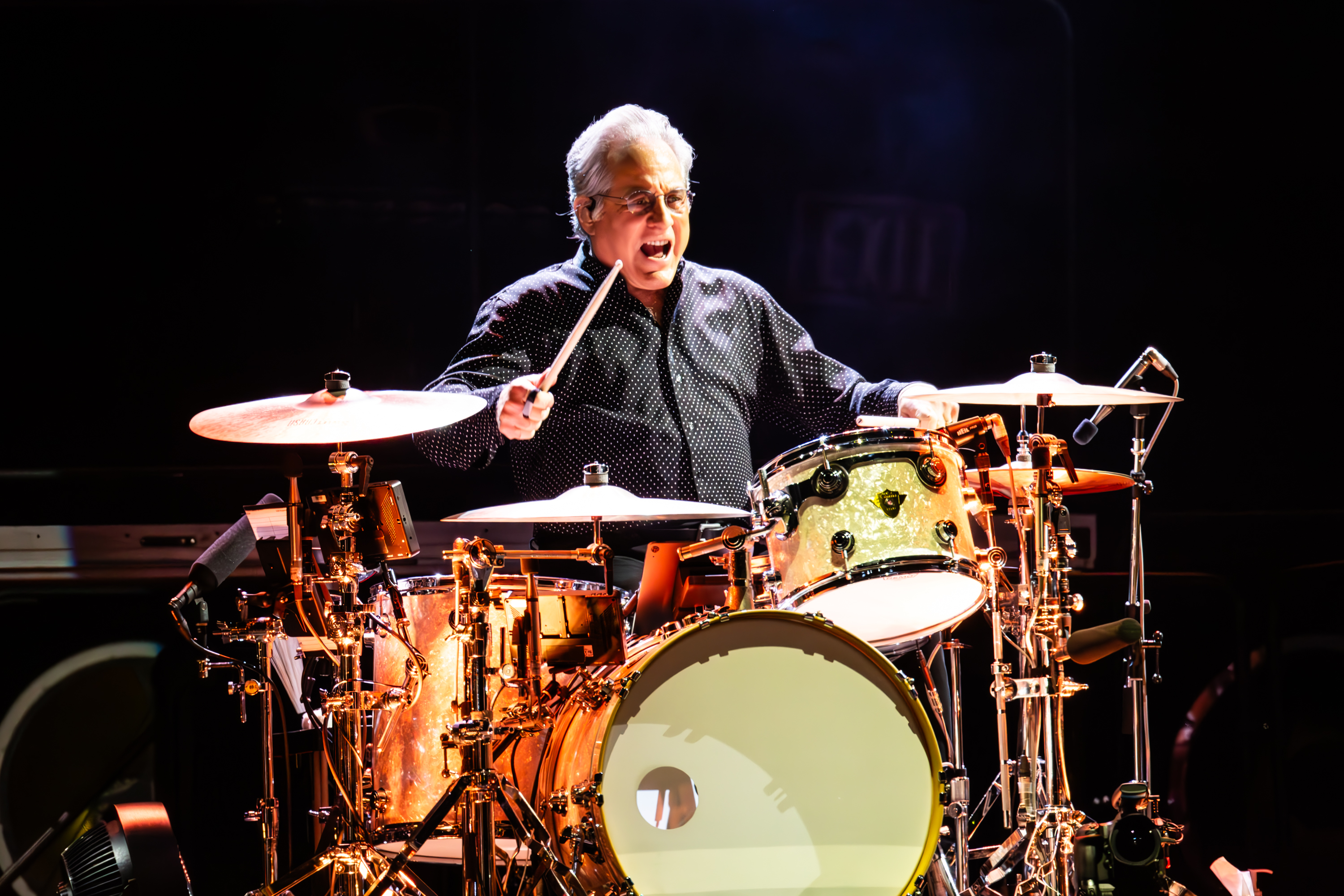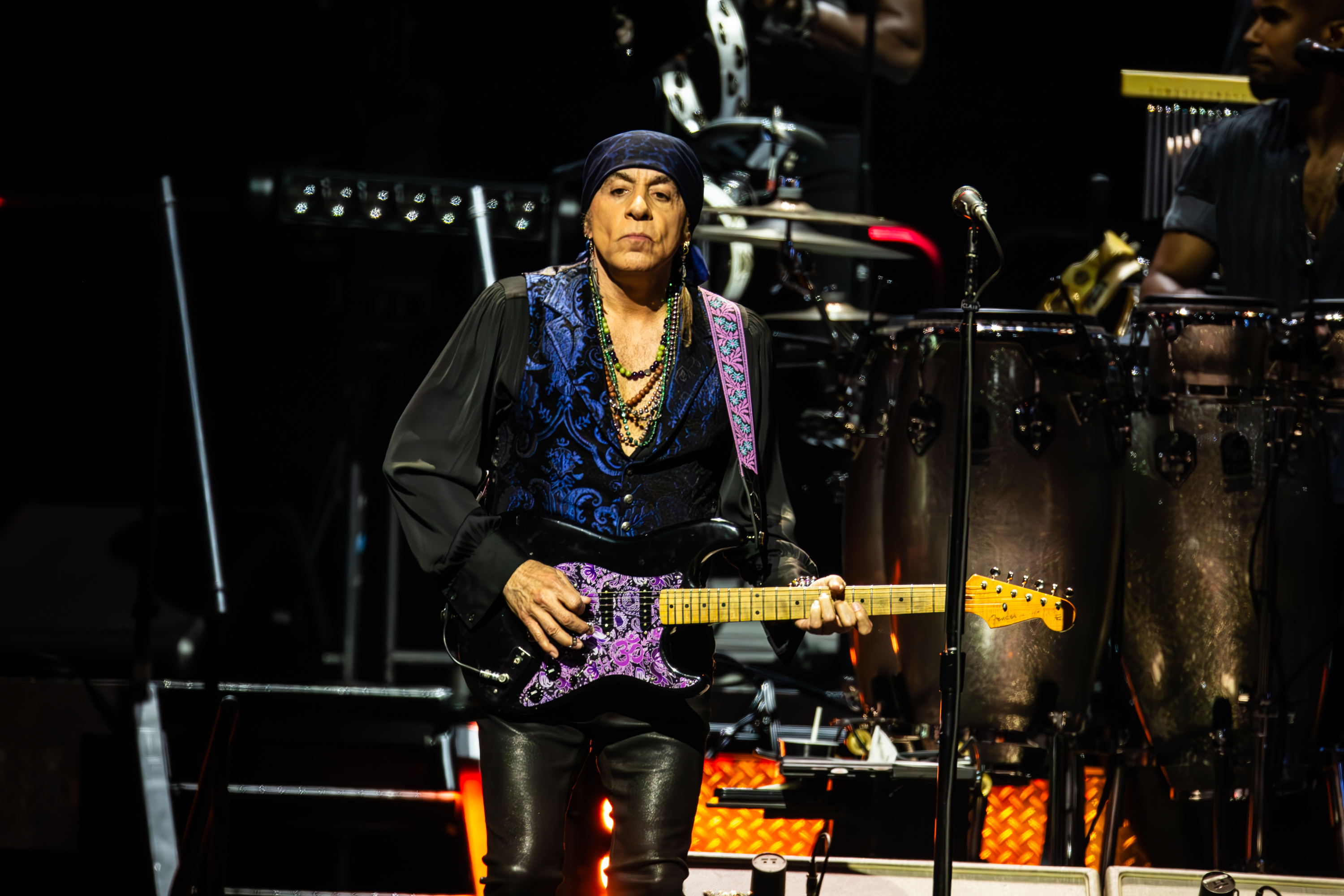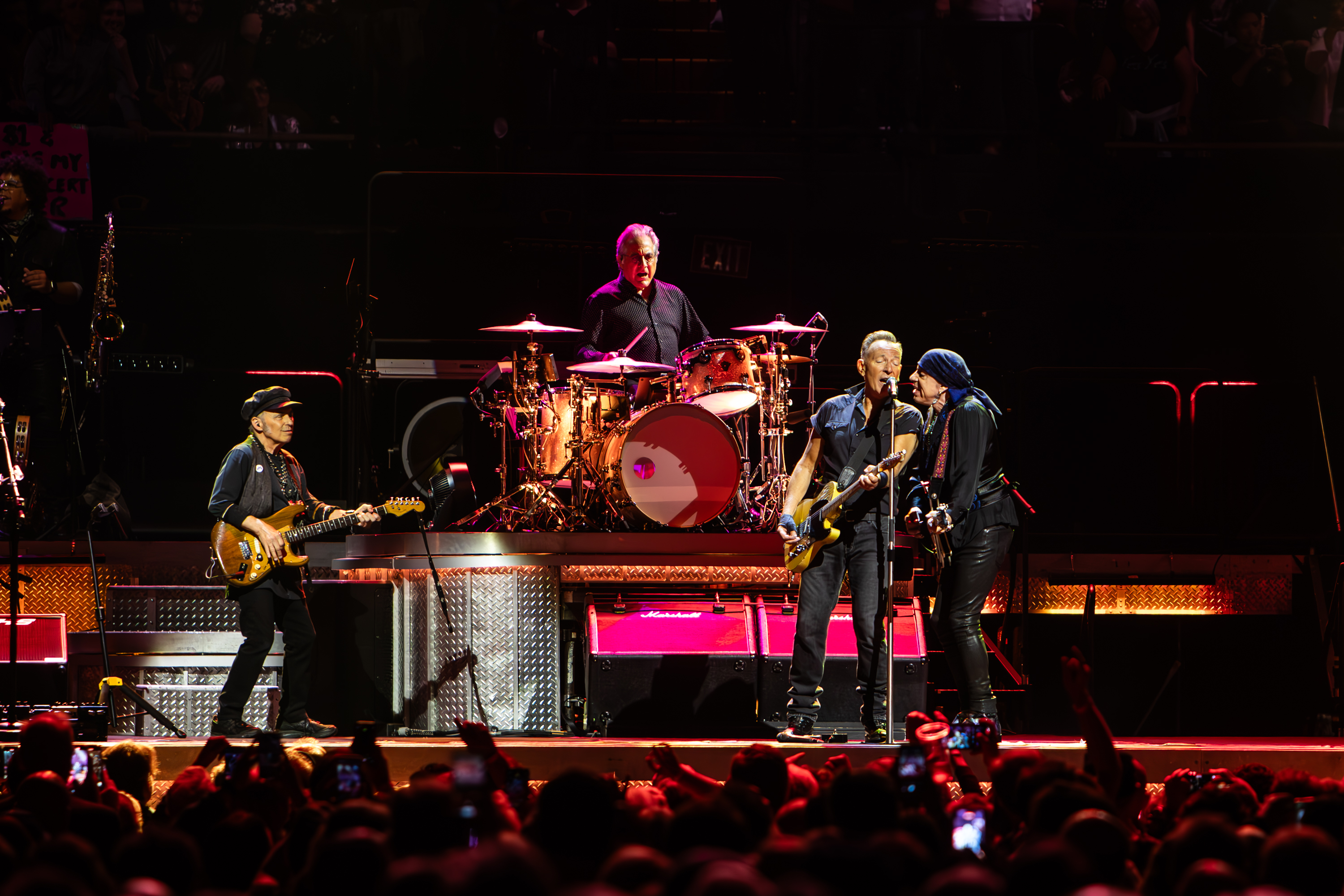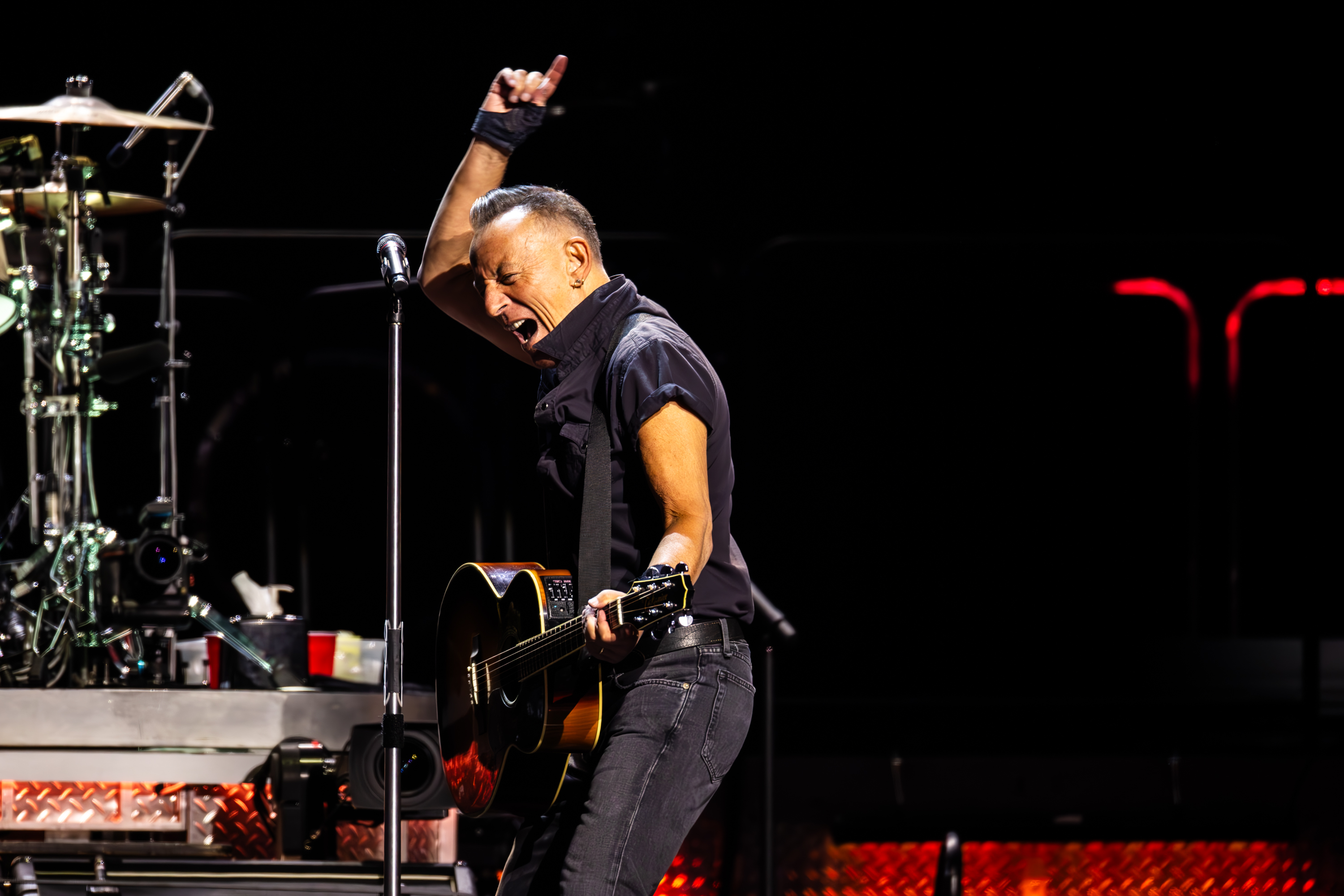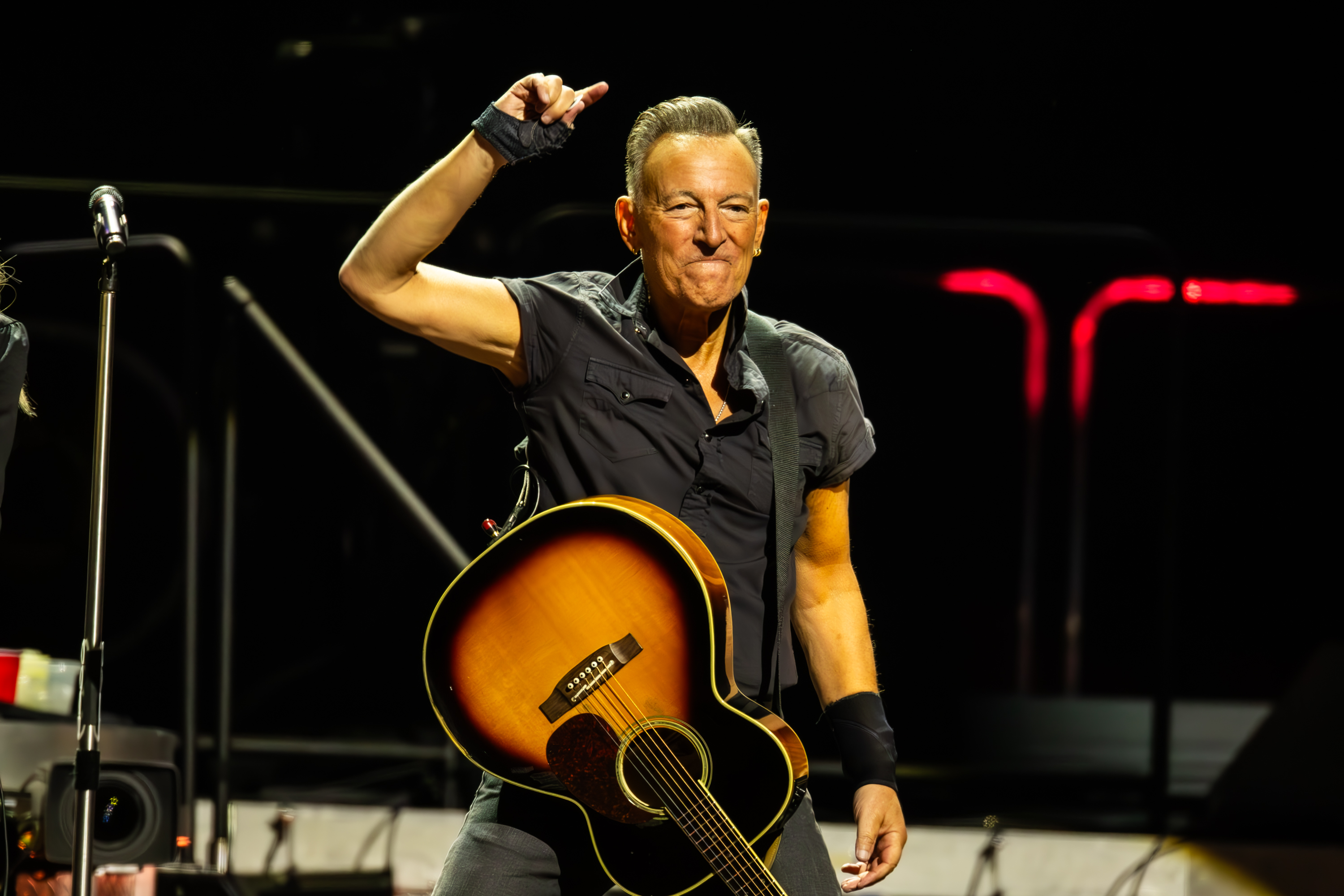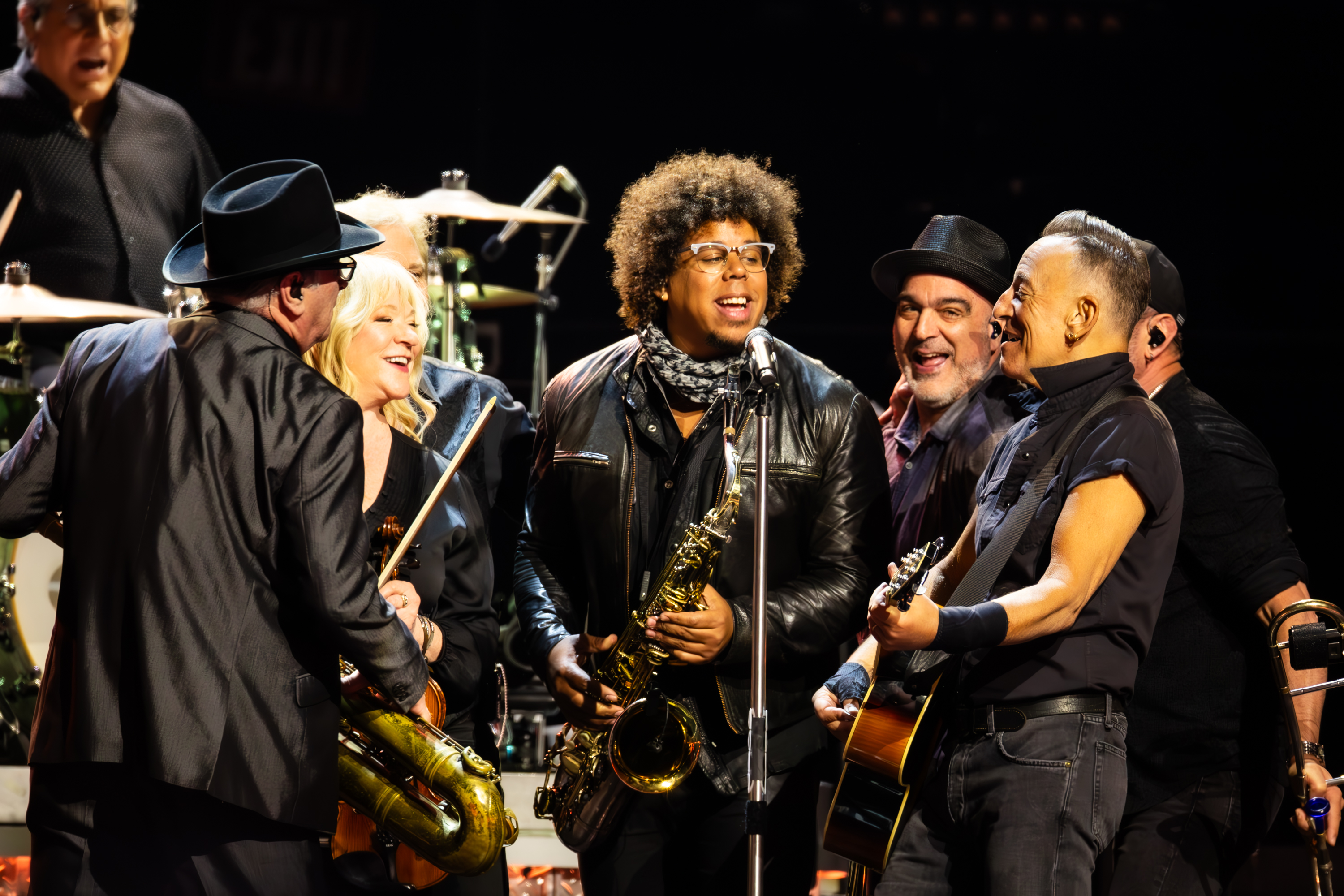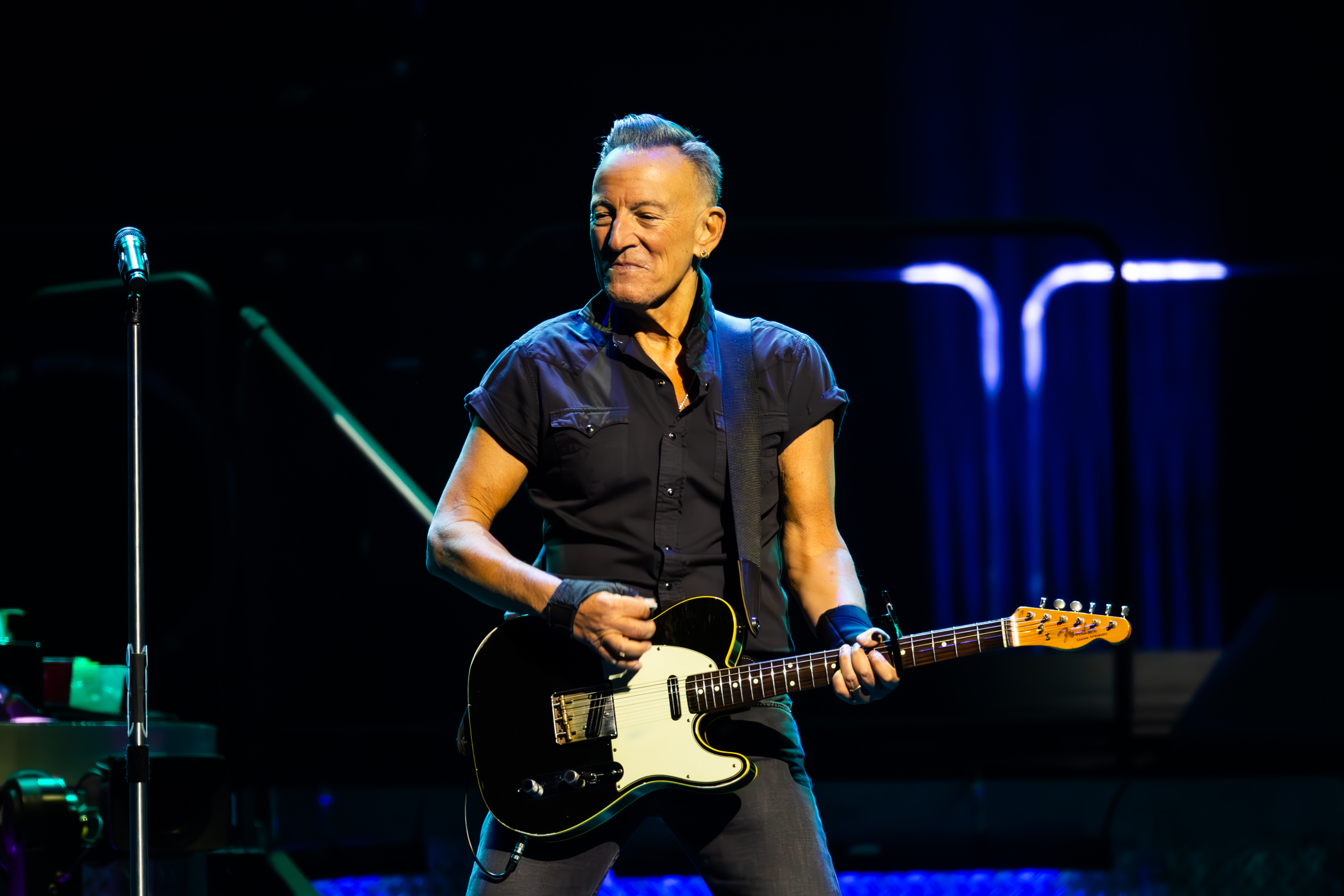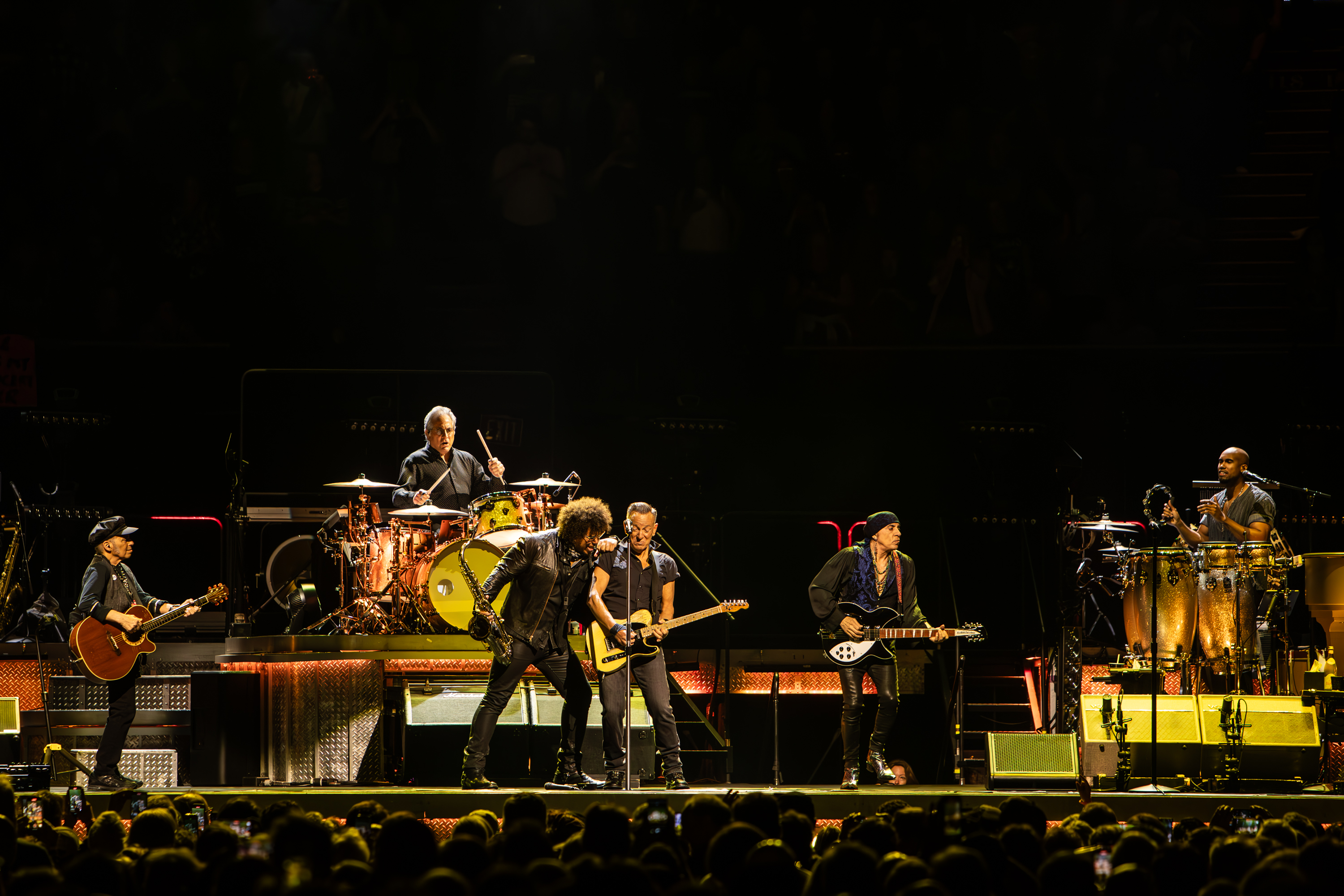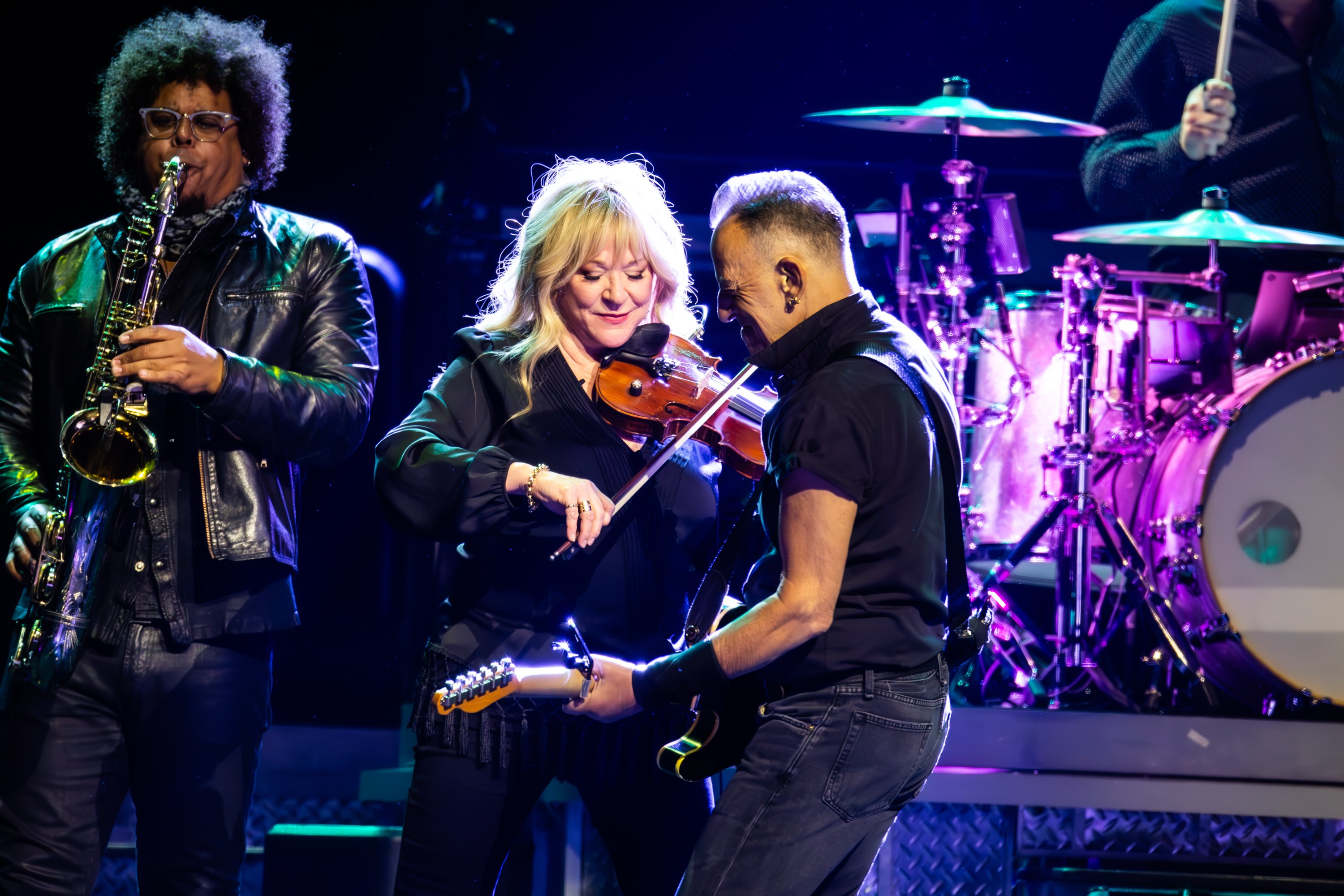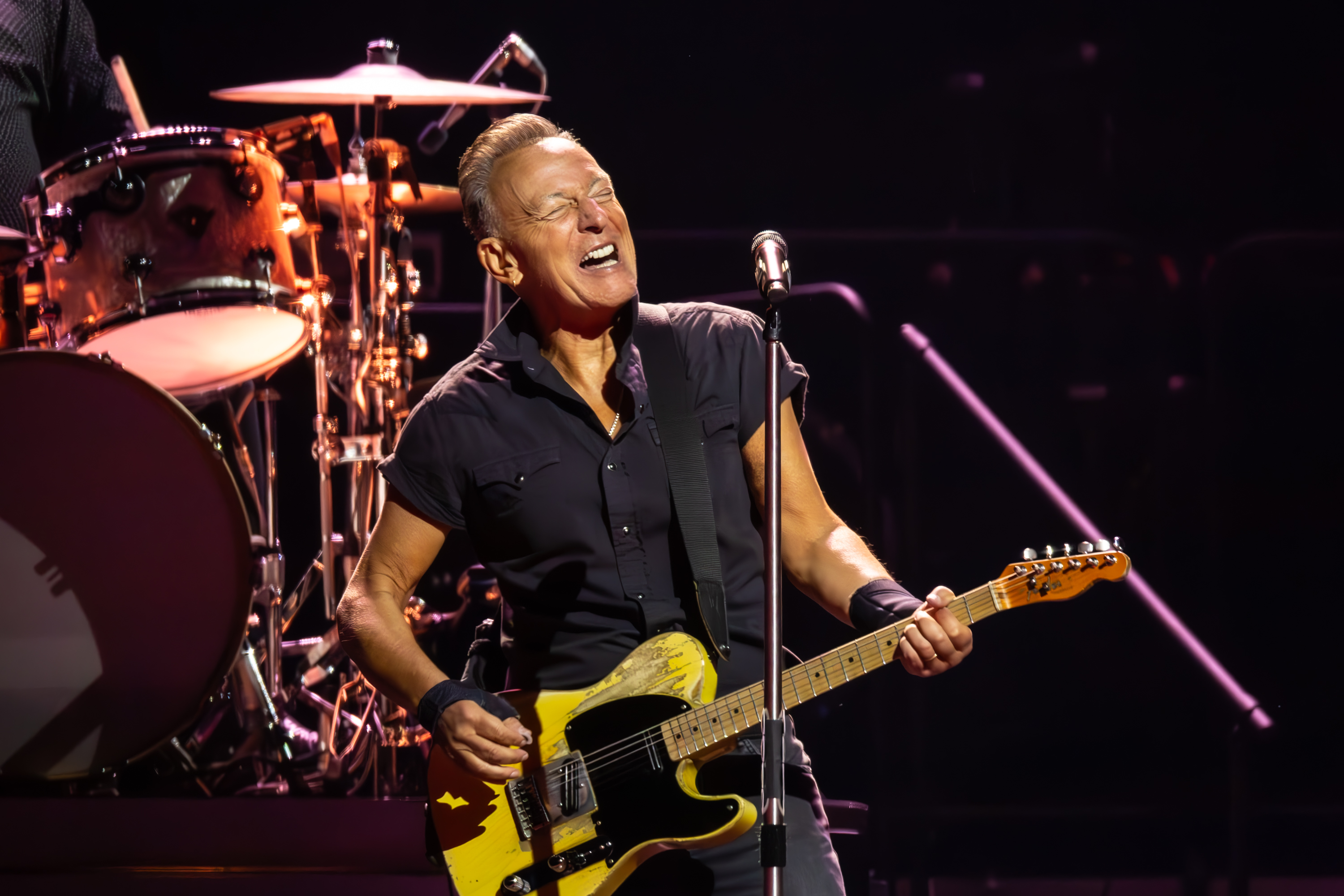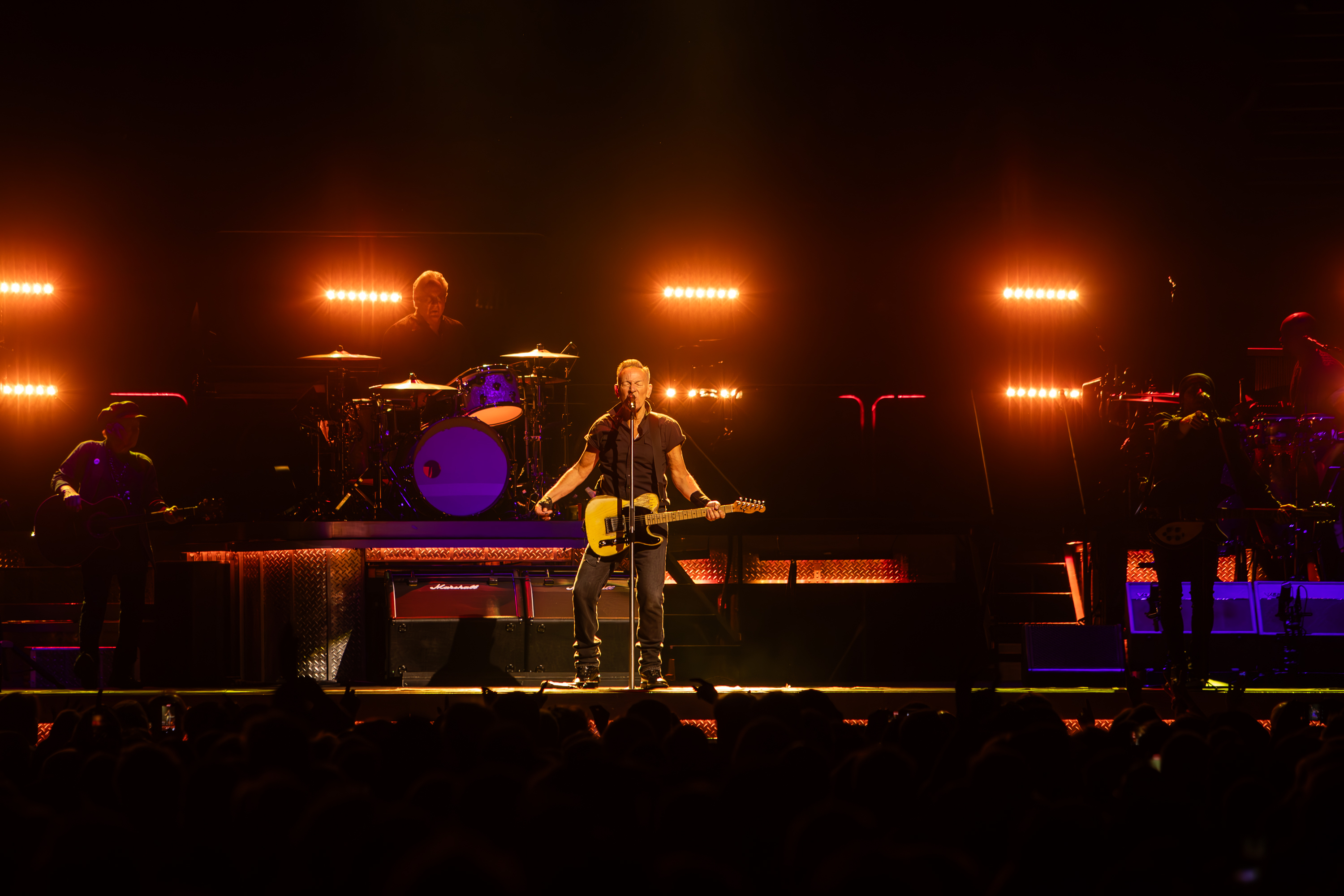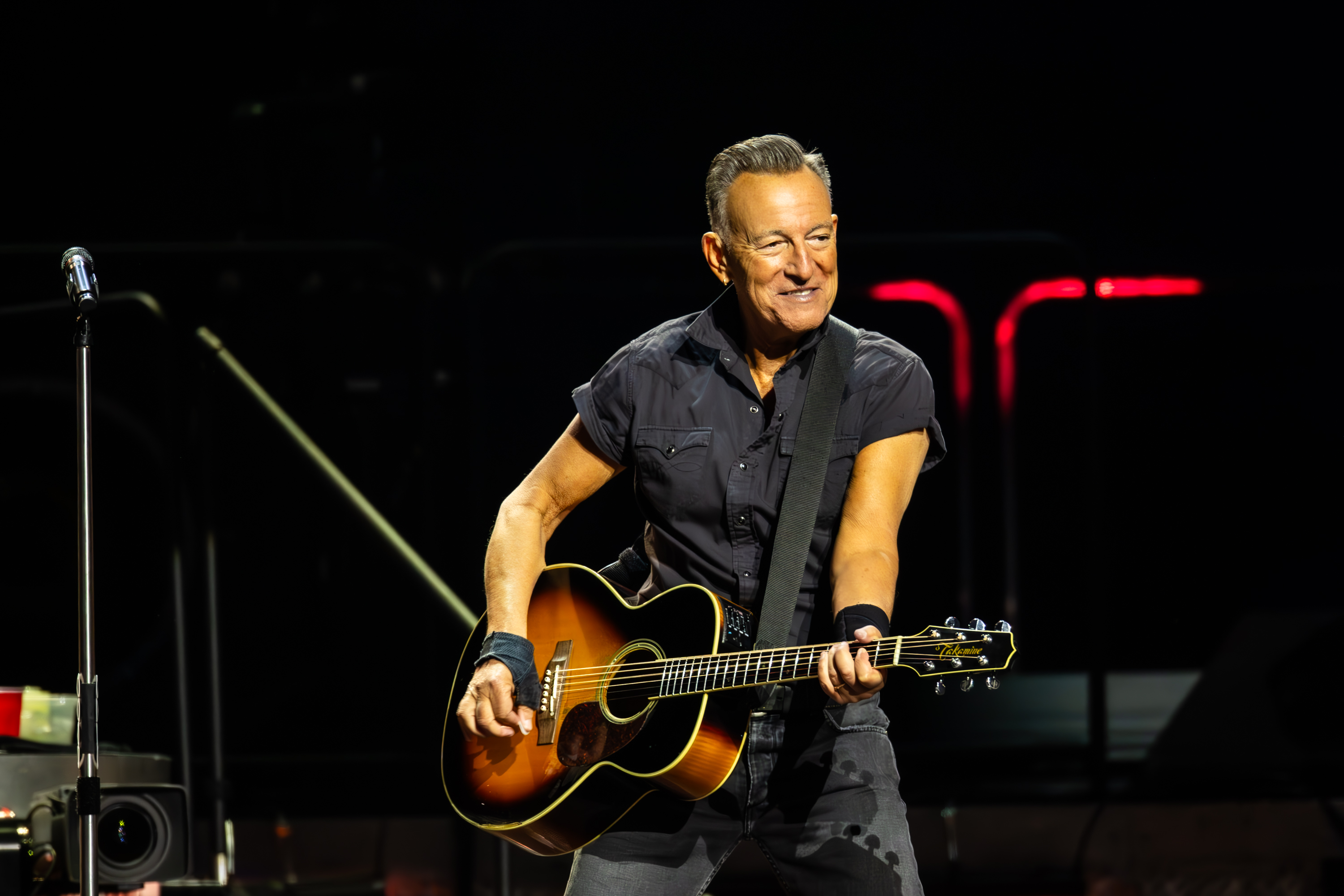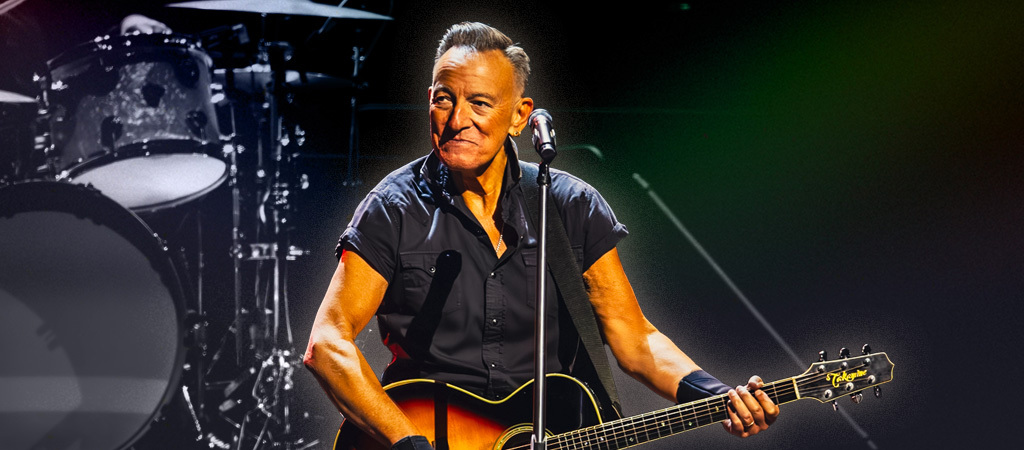Just a little over a year ago, when Taylor Swift launched her Eras Tour in Phoenix, Arizona, a very familiar analog was thrown around for obvious reasons. The sheer physical magnitude of her performance, stretching beyond three hours of seamless entertaining, evoked a name that’s become synonymous with marathon sets and crowd-pleasing live mythology. That name, of course, is Bruce Springsteen.
Sure, the comparison is relatively flimsy and speaks mostly to the career-spanning endurance of the performances. Swift’s concerts are a bit more set-in-stone, with her nightly acoustic set providing moments to dig deep into her catalog and surprise. Swift is more focused on choreography and spectacle. Swift lets the songs become the star of the show, with each performance space becoming a safe haven for unabashed superfandom.
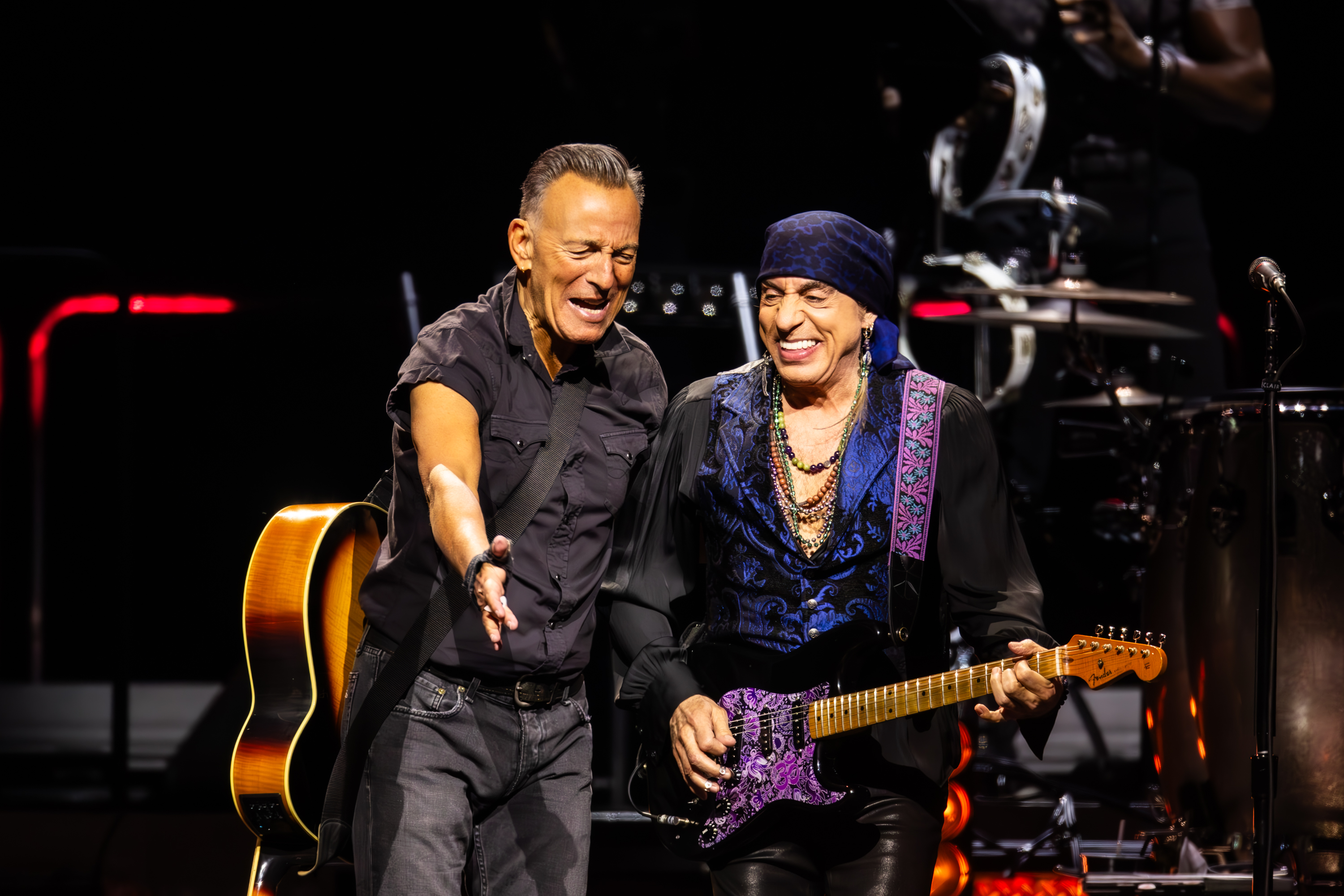
On Sunday night at the second of his two sold-out nights at Los Angeles’ Forum, Springsteen underscored why his name has become interchangeable with “impressive, physically demanding live performances.” The New Jersey legend is 74 years old and is still stretching his appearances well beyond the three-hour mark on a nightly basis. And while some of his classic-rock brethren play similarly epic sets, none do so with Springsteen’s force, often letting backing vocalists and bloated bands carry the songs to their familiar heights. That’s less a knock on the performing abilities of folks past the typical retirement age and more a comment on how Springsteen’s vigor defies reason.
And though some might point to Springsteen’s complete backing choir and sprawling E-Street players as evidence to the contrary, the majesty of a Springsteen show is in the interplay between the two. The E-Street Band is never tasked with masking the shortcomings of its central figure. No, they simply take his power and strap a rocket to the back of it. During the main set’s closing of “Thunder Road,” a song that’s as perfect as any ever written, the band largely slowed down and let Bruce take the song as his own leisure. But once he’d reached its iconic crescendo, the horn section made their way to the front of the stage, with first Jake Clemmons leading the charge, only to be accompanied by his four other brassed compatriots, blasting the closing notes through the venue’s roof.
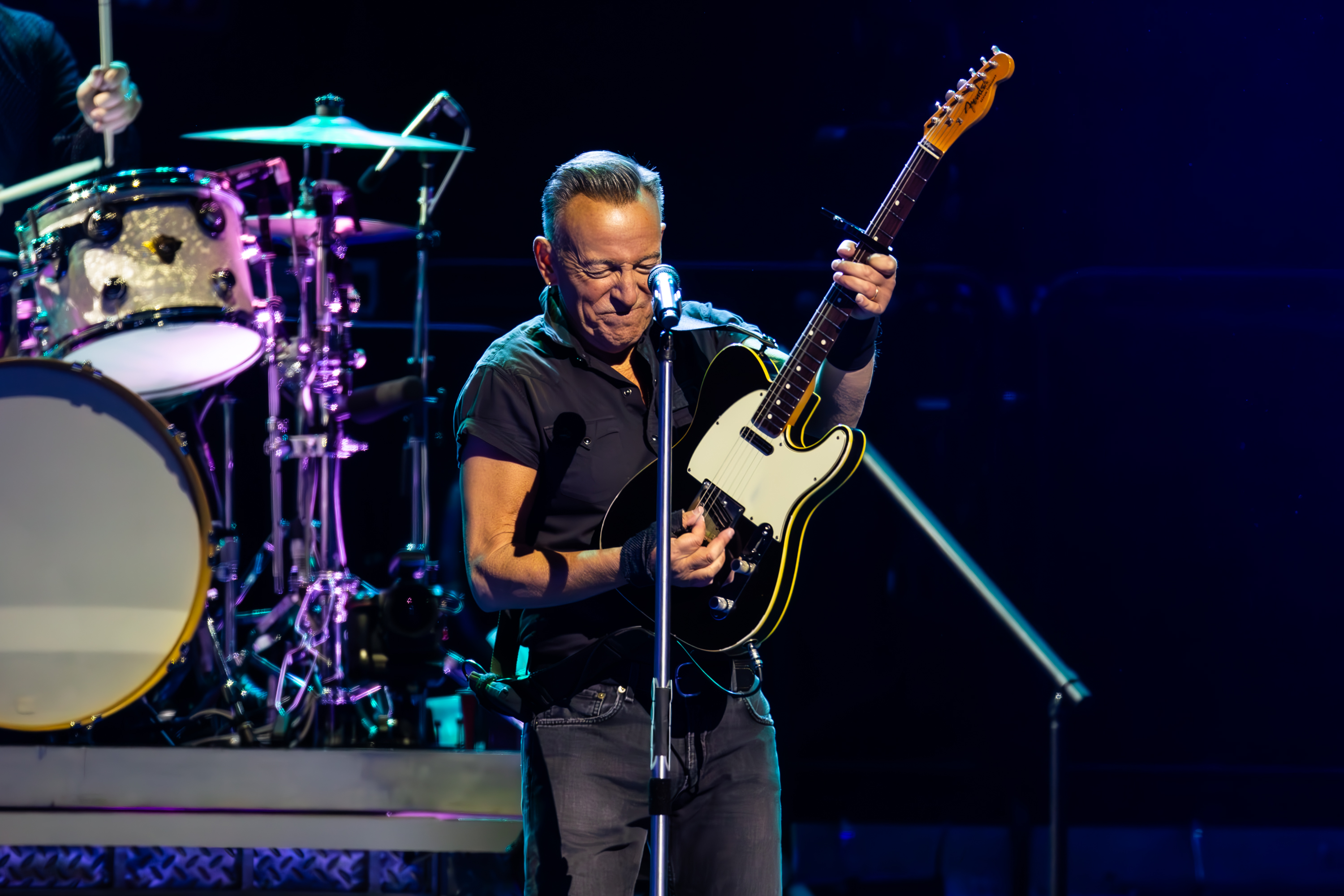
And moments like this were commonplace. It’s hard to imagine “Glory Days” live without Little Steven’s playful exchanges with The Boss, or a night without Max Weinberg providing a “shot” from his snare or Nils Lofgren spinning circles like a madman while dropping a guitar solo. The “couple” songs that Springsteen’s wife Patti Scialfa sings with her husband — including a version of “Tougher Than The Rest” where their mouths are as close as they can be without touching — were about as sexy as two Boomers are legally allowed to be. And a guest appearance from Rage Against The Machine’s Tom Morello for a pair of appropriate tunes, “American Skin (41 Shots)” and “The Ghost Of Tom Joad,” found the hard-rocking guitarist showcasing all his axe-wielding tricks to the audience’s delight.
This all serves to highlight the elements of a Bruce Springsteen concert that are beyond compare. For all the things that a massive pop concert can provide, rarely is it impressive because of musicianship. And where some might use confetti cannons or fireworks to give the crowd a visceral jolt, Bruce Springsteen is a living reminder that there are other ways to achieve similar results, and they only require a guitar or a drum set or a saxophone. Or, in the case of Bruce himself, the personal introspection and clarity he provides when using the space between songs to illuminate his own story and reflect on his personal journey.
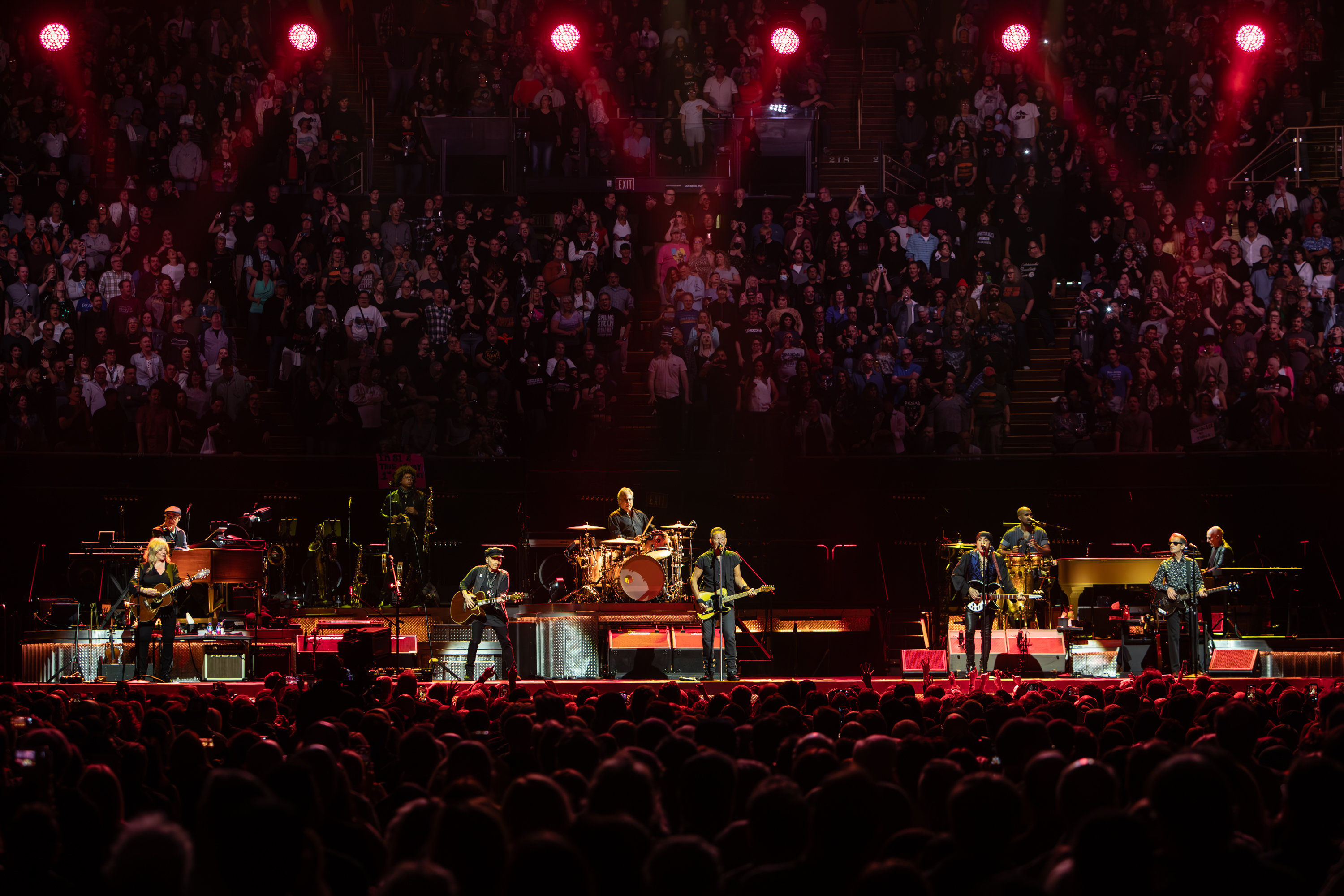
The “Bruce Springsteen tells a story while introducing a song” archetype has been a meme since before memes were a thing. But still, when The Boss uses the intro of a tune to reflect on grief, on love, on friendship, or on his beloved rock and roll, thousands of people still shut up and listen. It’s a superpower to be so innately poetic without resorting explicitly to poetry and provides balance to the emotional catharsis of shouting his anthems back to him. So while Springsteen might not have backing dancers or lasers or excessive visuals, he still remains the gold standard for live music. It’s the kind of set that makes sense regardless of fandom, where the value is inherent. It might not be what the future of live music on the biggest scale looks like, but career artists would benefit from looking at how far passion and craftsmanship can take you.
Check out an exclusive gallery of Bruce Springsteen and the E Street Band at the Forum in Los Angeles below.
